The Devil All the Time Review: A Netflix Movie For Misery’s Sake
Murphy’s Law states anything that can go wrong will go wrong. That seems to be the case with The Devil All the Time, the latest from Christine and Simon Killer director Antonio Campos.
This article is more than 2 years old
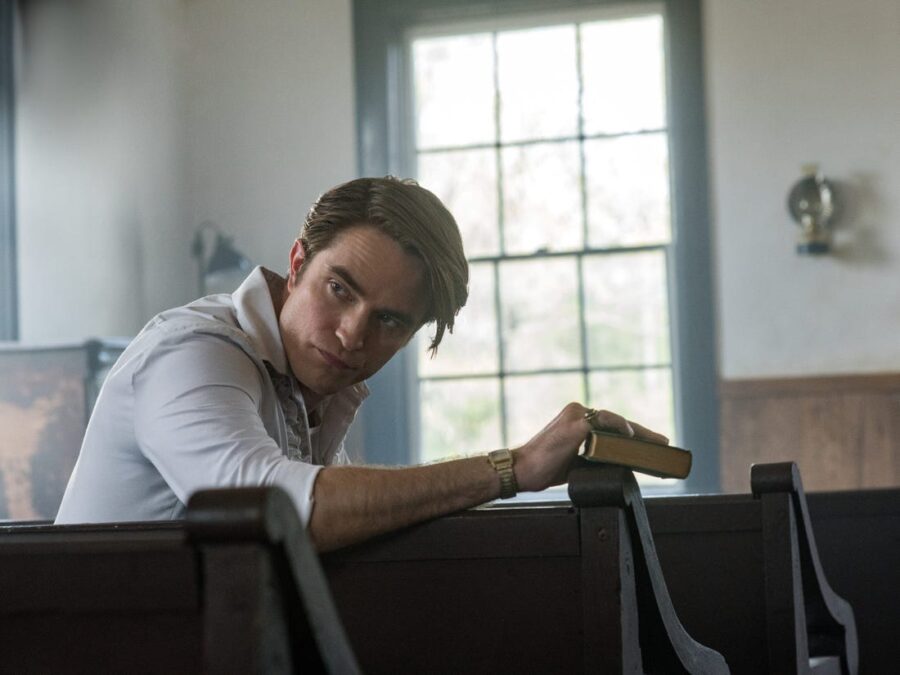
Murphy’s Law states anything that can go wrong will go wrong. That seems to be the case with The Devil All the Time, the latest from Christine and Simon Killer director Antonio Campos. The Devil All the Time sets itself up as a sprawling family drama, stretching between sparsely populated areas of Ohio and West Virginia and over several generations. But instead, the entire exercise comes off more like a series of bleak and unrelentingly brutal mishaps and proof of evil in the world without much to latch onto.
Adapted by Antonio Campos and his brother Paulo, based on a book by Donald Ray Pollock, The Devil All the Time’s attempt to boil down the events of this ambitious story and in doing so, compresses this novel into scene-after-scene of terrible things happening to this impressive cast. It’s almost as if the brothers Campos felt that the most essential thing to understand these characters was to showcase their most horrific moments and experiences. Campos’ story features murder, crucifixions, violent attacks and a disgusting scene involving spiders, Even after all that, there’s still two more hours to go.
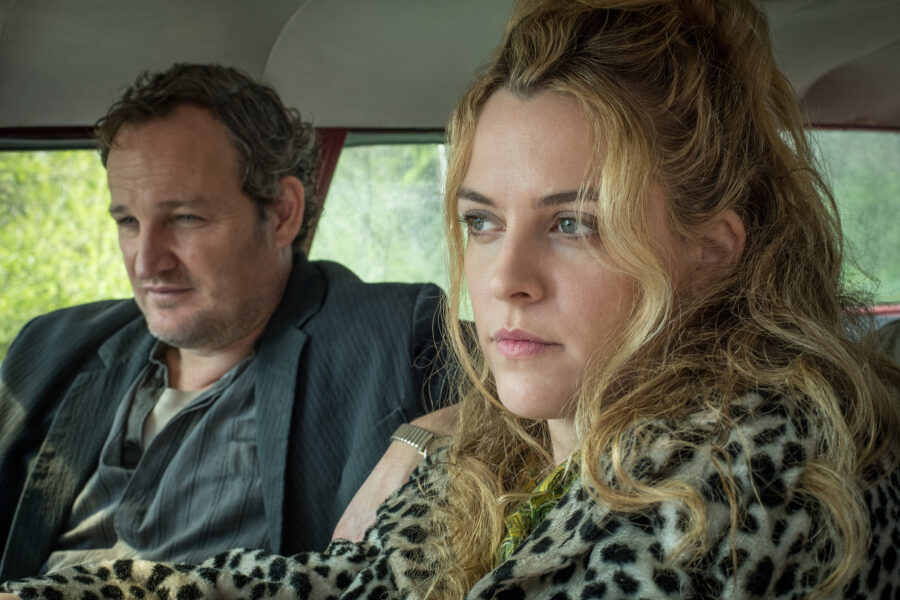
The plot of The Devil All the Time mostly revolves around Arvin Russell (Tom Holland), his step-sister, Lenora (Eliza Scanlen), and the people in the neighboring backwoods area. This includes an unsettling new priest, Preston Teagardin (Robert Pattinson), Sandy and Carl Henderson (Riley Keough and Jason Clarke, respectively) a couple that likes to seduce hitchhikers take their photos and then murder them, and Sandy’s brother, the corrupt Sheriff Lee Bodecker (Sebastian Stan).
The Devil All the Time is essentially Arvin’s story, starting with his parents meeting (played by Bill Skarsgård and Haley Bennett), and going through his teenage years. Campos will often leave Arvin to catch the audience up with what is happening in the lives of all these other characters and more, before settling back onto Arvin. Yet all these character connect through the experiences of Arvin and his life, in one way or another.
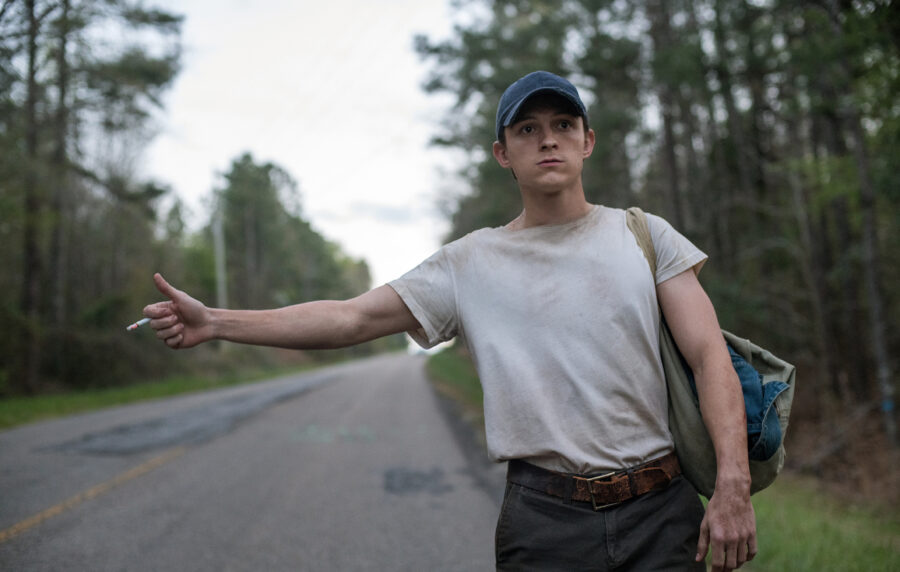
If this description of The Devil All the Time comes off as vague, that’s because it has to be, as to describe anything that happens is to spoil some terror that occurs to Arvin or someone in his orbit. The characters are paper-thin, there’s little to any of them beyond the traumas they have incurred. Is there any reason given why the Henderson family gets their kicks from killing strange boys? Nope! Why is Teagardin such a lecherous creep? Because he is.
Many of these characters seem to exist solely for the sake of misery. The few things that we do learn about them comes from an overbearing narration by the book’s author, Pollock, which more often than not is just explaining things the audience can already tell from what Campos is showing them. The Devil All the Time thinks it’s a combination of No Country for Old Men and The Place Beyond the Pines, but it doesn’t know how to handle the character development that made those other films so rich.
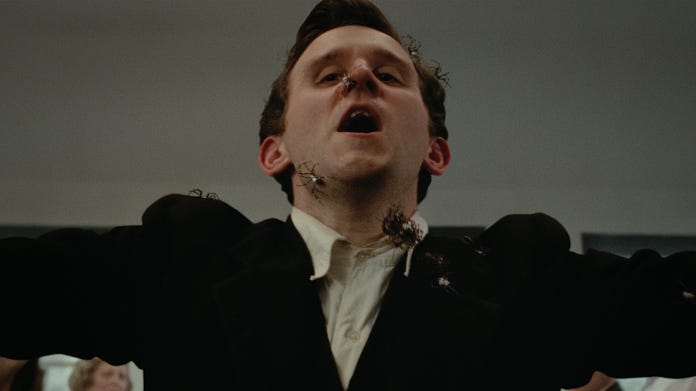
Yet despite how little these characters are given to begin with, The Devil All The Time’s cast makes the most of what they’re given. Pattinson is delightfully smarmy, hamming it up for this sermons and making himself as creepy as possible. Holland is strong in a role that at first seems to be woefully miscast, since Arvin is often quiet and sometimes vindictively brutal towards those who hurt the ones he loves, until he slips into the performance with ease. But the way Campos weaves in and out of character’s stories, there’s almost too little time given to any one person to ever find something substantial within their stories.
Campos’ work behind the camera does show that he could definitely handle larger projects that his usual smaller indie films, if given the right material (he’s currently attached to a prequel to The Omen) and cinematographer Lol Crawley, who has worked on such films as 45 Years and Four Lions, brings out the rustic nature of the story with lush woods and gorgeous sunsets.
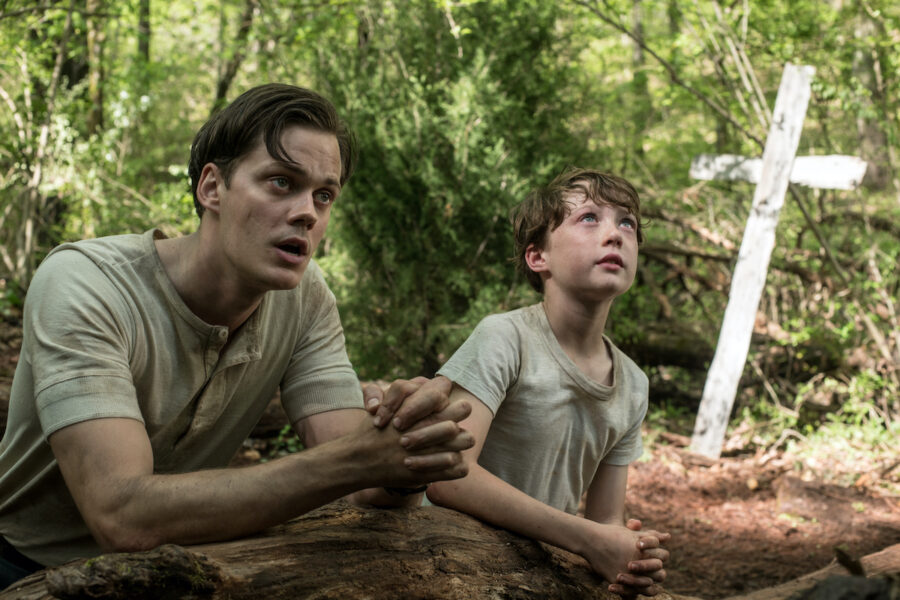
Ultimately, it’s that screenplay that brings the whole film down. Either the story shouldn’t have been told in such an abbreviated way, or maybe some of the never-ending sequences of pain could’ve been cut. It doesn’t take long for The Devil All the Time to become repetitive with its dark and dismal viewpoint. What could’ve been an impressive meditation on how men can do evil in the name of god and how evil spreads across generations instead becomes a monotonous battle to see how much its audience can stomach.












